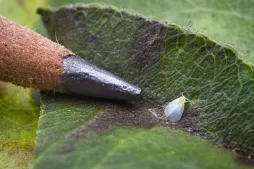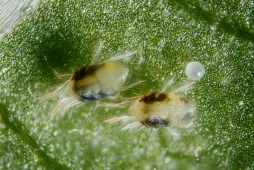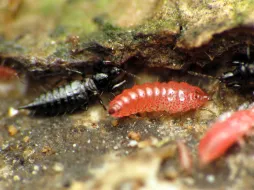Fatsia japonica, Japanese Aralia
You can have exotic foliage and still resist frost and snow. This is the case with Fatsia japonica. Also known as Japanese Aralia, this shrub belongs to the Araliaceae family. It is native to Japan and South Korea. In our latitudes, it can be grown indoors and in the garden.
How to recognize the Japanese Aralia, Fatsia japonica?
Fatsia japonica does not exceed two meters in all directions when grown in pots. Smaller than fatsia polycarpa, it reaches a height of four meters when planted in the ground. It has an upright, bushy habit.
Its sturdy stems, like the branches, are covered with fine down when young. The hairs eventually fall off, leaving the branches perfectly hairless.
The varnished leaves grow on a stalk that can measure up to 30 centimetres. They are webbed and have at least seven lobes. Their margins are crenellated. The botanical variety has dark green foliage. However, cultivars with white variegated leaves Fatsia japonica variegata) or golden yellow leaves (Fatsia japonica aurea) are commercially available.
Japanese Aralia blooms in autumn. It then adorns itself with umbels of cream flowers.
These are replaced by bunches of round berries. Green, the berries turn black as they ripen.
Only birds can eat these berries. The fruits cause stomach upsets to humans and other animals who eat them. But if the fruit is removed, Fatsia japonica is not toxic to humans, dogs or cats.
Our maintenance tips
Resistant to pollution, sea spray and cold, fatsia japonica can be grown outdoors and indoors. If yours is a houseplant, try giving it a winter rest in an unheated room, such as a veranda or loggia. This will speed up its growth.
Watering
Fatsia japonica require regular watering. But it must be moderate, otherwise the roots will rot. The substrate must remain moist but never soggy.
Water your plant with soft, non-calcareous water at room temperature. Once you've finished, drain off any water that accumulates in the saucer or planter.
Water your plant with soft, non-calcareous water at room temperature. Once you've finished, drain off any water that accumulates in the saucer or planter.
Spray
Your Japanese Aralia is a tropical plant. It appreciates humidity. Spray its foliage with water at room temperature.
Avoid calcareous water, which leaves white marks on the leaves. Prefer rainwater or filtered water.
Repotting
Every spring, repot your Fatsia japonica to give it more space.
Obtain a perforated pot. Line the bottom with clay balls or gravel to improve drainage.
Then pour in a layer of potting soil for green plants. You can lighten it with a little river sand or vermiculite. Plant your Japanese Aralia in the center and fill the pot with the substrate.
Water copiously to ensure the roots adhere to the soil.
You can place the pot on a saucer of moist clay balls to increase humidity.
Fertilization
To promote the growth of your Fatsia japonica, apply fertilizer in spring and summer.
To promote the growth of your fatsia japonica, use a green plant fertilizer.
Prune
Remove dead leaves. Using clean, sharp pruning shears, trim back dead branches. You can also shorten the stems to control the shape of your Japanese Aralia
Plantation
When the risk of frost has passed, it's time to plant.
Choose a location that is sunny but sheltered from the wind. It should be at least one meter away from other trees and walls to allow your Japanese Aralia to grow.
Soak the rootball. Meanwhile, dig a hole two to three times the size of the rootball. Plant fatsia japonica in the center and fill in. Don't hesitate to amend the soil with sand and compost if it's poor or heavy.
Water generously to encourage rooting. You can mulch the soil with mineral or organic matter to keep it cool. This will reduce the need for watering.
Cutting
Cutting is carried out during the strong growth phase, generally in spring and early summer.
Dig up one of the shoots forming at the foot of the main plant. Remove the leaves at the base.
Plant your graft in a pierced pot lined witha rich, light substrate, such as potting soil with sand.
Install the cutting in a mini greenhouse. If you don't have one, you can cover it with a translucent bottle. Remember to aerate regularly and mist the soil if it dries out.
Diseases / Threats
Information
| Family | Araliaceae - Araliaceae |
| Type | Fatsia - Fatsia |
| Species | Japanese Aralia - Fatsia japonica |
| Lifecycle | Perennial |
| Foliage | Evergreen |
| Exposures | |
| Substrat | |
| Planting methods |
Open ground In pots In tubs |
| Category | |
| Tags |
Flowery Rustic Soiffarde |
| Origin |
East Asia |
| Hardiness (USDA) | 8b |
| Leaf color |
|
| Flower colors |
|
| Fruit color |
|
Discover plants from the same family
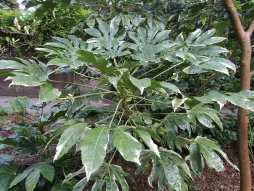
Fatsia japonica variegata
Discover
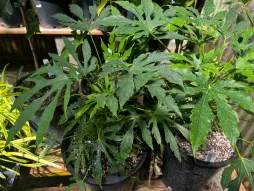
Fatsia polycarpa
Discover
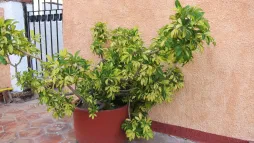
Schefflera arboricola
Discover
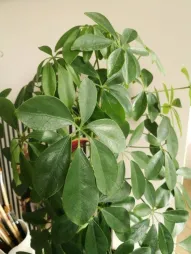
Schefflera actinophylla
Discover













